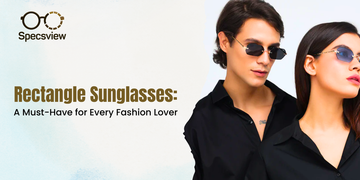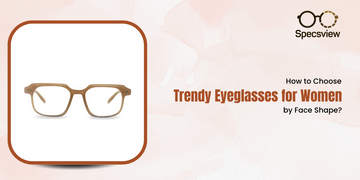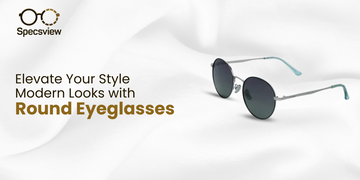Bifocal lenses are special glasses that help you see clearly both up close and far away. They're split into two parts: the top part helps you see things that are far, like signs or faces far away, while the bottom part helps you see things up close, like reading books or using your phone. They're really helpful if you find it hard to see close-up as you get older, which happens to a lot of people.
How do bifocals work ?
Bifocals are special glasses that help you see things at different distances. Imagine you have trouble seeing far away things, like street signs, and also struggle to read up-close things, like books or your phone. Bifocals solve this by having two parts in each lens: the top part helps you see far away, and the bottom part helps you see up close.

So, with bifocals, you can do both without needing to switch glasses. It's really handy, especially as you get older and your eyes might need different help for different tasks.
Types of Bifocal Lenses
Bifocal lenses are specially designed to help people who need different types of vision correction in one pair of glasses. They have two distinct parts in each lens, allowing wearers to see clearly at both near and far distances without needing separate pairs of glasses.
There are a few types of bifocal lenses that help people see both far and near:
- Flat-top bifocals: These have a visible line across the lens where the top part helps with distance vision and the bottom part helps with near vision.
- Round bifocals: These also have a line, but the bottom part is rounded for a smoother transition between distance and near vision.
- Blended bifocals (no-line or progressive bifocals): These don’t have a visible line. Instead, the prescription changes gradually from top to bottom, so you can see clearly at all distances without the line getting in the way.
Each type of bifocal lens works a bit differently, but they all help people with different vision needs see better both up close and far away
When Are Bifocal Lenses Recommended?
Bifocal lenses are glasses that help you see both up close and far away without needing two pairs. Bifocal lenses are prescribed in one of the following cases:
- Presbyopia: Bifocal lenses are often prescribed as people get older and have trouble seeing close-up objects like books or phones.
- Two Vision Needs: They help with two types of vision in one pair of glasses: seeing things far away (like signs) and up close (like reading).
- No Need for Two Pairs: Instead of switching between glasses, bifocals let you do both with just one pair.
Bifocal lenses are a helpful solution for anyone who has trouble with both near and far vision, especially due to aging eyes.
Who Invented Bifocals?
Bifocals were invented by Benjamin Franklin in the late 1700s. He created them to see both close-up and far-away things without switching glasses. His invention has been really helpful for people with different vision needs.
Progressive Lenses: Alternative to Bifocals
Progressive lenses, like bifocal lenses, are glasses that help with both near and far vision. However, they work differently. Bifocals have a distinct line separating the two parts of the lens: one for near vision and one for distance. In contrast, progressive lenses have a seamless transition between these areas, offering a gradual change in prescription from top to bottom.

This means there's no visible line on the lens, giving a more natural look. Progressive lenses are often preferred because they provide clear vision at all distances without the abrupt change of bifocals, making them a modern alternative for those needing multifocal vision correction.`





